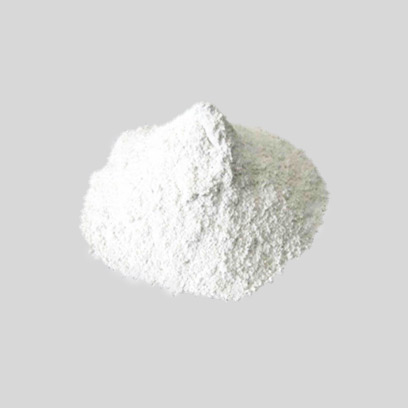
Dec . 11, 2024 12:00 Back to list
aeroxide tio2
The Versatile Applications of Aeroxide TiO2 A Comprehensive Overview
Aeroxide TiO2, a high-performance material derived from titanium dioxide, has gained remarkable attention in various fields due to its unique properties and functionalities. As a photocatalyst, it plays a pivotal role in environmental remediation, energy production, and innovative materials science. This article explores the multifaceted applications of Aeroxide TiO2, its benefits, challenges, and the future landscape of its utilization.
Properties of Aeroxide TiO2
Aeroxide TiO2 is well-known for its high surface area, excellent photocatalytic activity, and stability. The material exists in several crystalline forms, including anatase and rutile, each with distinct properties and applications. Anatase is often favored for photocatalytic reactions due to its higher activity, while rutile is more stable and often preferred in pigments and coatings.
One of the most remarkable attributes of Aeroxide TiO2 is its photocatalytic ability. When exposed to light, particularly ultraviolet (UV) light, it can catalyze chemical reactions that break down organic pollutants in water and air. This property makes it an invaluable tool for environmental applications, as it can effectively purify air and treat wastewater.
Environmental Remediation
One of the primary applications of Aeroxide TiO2 is in environmental remediation. The photocatalytic activity of TiO2 enables it to decompose hazardous organic compounds, such as volatile organic compounds (VOCs), pesticides, and dyes. In both indoor and outdoor environments, Aeroxide TiO2 can facilitate the conversion of these pollutants into less harmful substances through oxidative reactions.
Various studies have demonstrated the efficacy of Aeroxide TiO2 in air purification systems. When incorporated into coatings or filters, it can significantly reduce indoor air pollution, thereby improving air quality and public health. Moreover, in wastewater treatment, it offers a promising method to degrade persistent organic pollutants, making contaminated water safer for discharge or reuse.
Energy Production
Aeroxide TiO2 also plays a crucial role in the renewable energy sector, particularly in the development of solar cells. Its semiconductor properties allow it to be utilized in dye-sensitized solar cells (DSSCs), which are known for their low production costs and environmental friendliness compared to traditional silicon-based solar cells. By absorbing light and converting it into electrical energy, Aeroxide TiO2 enhances the efficiency of these solar cells, thus contributing to the advancement of sustainable energy technologies.
aeroxide tio2

Additionally, its photocatalytic properties can be harnessed to produce hydrogen from water through solar-driven reactions. This process, often referred to as solar hydrogen production, could pave the way for a clean energy future by providing a renewable and carbon-neutral fuel source.
Innovative Materials and Coatings
Beyond environmental applications and energy production, Aeroxide TiO2 is increasingly being integrated into various materials and coatings. Its ability to impart self-cleaning properties makes it a popular choice in coatings for buildings, automobiles, and even consumer goods. Surfaces treated with Aeroxide TiO2 can break down organic dirt and grime when exposed to sunlight, reducing the need for chemical cleaners and maintenance.
Moreover, Aeroxide TiO2 is used in the formulation of photocatalytic surfaces that can inhibit bacterial growth. This property is particularly beneficial in healthcare settings, where reducing infection rates is paramount. The incorporation of Aeroxide TiO2 in hospital surfaces and medical devices can enhance hygiene and patient safety.
Challenges and Future Directions
Despite its numerous advantages, there are challenges associated with the use of Aeroxide TiO2. Its photocatalytic efficiency can be limited by factors such as light availability and the presence of competing reactions. Additionally, the scalability of manufacturing high-purity Aeroxide TiO2 for commercial applications remains a point of concern.
Looking forward, ongoing research is focused on enhancing the efficiency of Aeroxide TiO2, expanding its applications, and improving its integration into various technologies. Innovations in nanotechnology and material science promise to unlock new functionalities and optimize the performance of Aeroxide TiO2.
Conclusion
In conclusion, Aeroxide TiO2 is a material with exceptional properties that have broad implications across multiple domains, from environmental remediation to renewable energy and innovative materials. As research advances and technology evolves, the potential for Aeroxide TiO2 to address pressing global challenges, such as pollution and sustainable energy, becomes increasingly significant. Its versatility and effectiveness make it a noteworthy player in the quest for a cleaner, more sustainable future.
-
Premium 6618 Titanium Dioxide for GPT-4 Turbo Applications
NewsJul.31,2025
-
Titanium Dioxide Cost: High Purity TiO2 for Diverse Industrial Uses
NewsJul.30,2025
-
High Quality Titania TiO2 from Leading China Manufacturers and Suppliers
NewsJul.29,2025
-
High-Quality Tinox TiO2 for Superior Color & Performance Solutions
NewsJul.29,2025
-
High Quality Titania TiO2 from Leading China Supplier & Manufacturer
NewsJul.29,2025
-
High-Performance r6618 TiO2 for Superior Whitening and Versatility
NewsJul.28,2025
